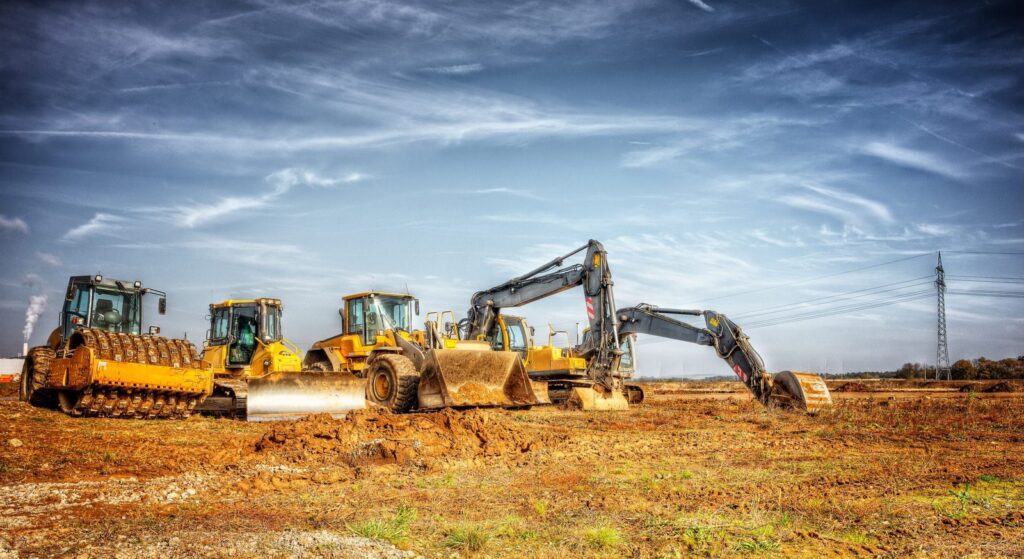Different types of excavators and excavator buckets are available on the market, each one made for a specific excavation work you wish to do. Before diving into your project, it’s important to distinguish the various types of excavators and excavator buckets. Indeed, they are designed for different purposes, with distinct capabilities and limitations.
THE DIFFERENT TYPES OF EXCAVATORS
Whether you purchase an excavator or prefer to rent heavy equipment, it’s important to recognize the different types of excavators and their purposes for your specific excavation work.
THE HYDRAULIC EXCAVATOR
Among all existing excavators, the hydraulic excavator is by far the most powerful one you will find. Primarily used in the mining industry, its use has gradually spread over the years.
Its main feature is its hydraulic bucket, which is ideal for jobs requiring the lifting of particularly heavy loads, such as transporting rocks, minerals, and similar materials.
However, the hydraulic excavator is not suitable for all jobs and may be too bulky in some situations. Generally, a 16-ton excavator is designed for commercial excavation work, while a 25-ton excavator is typically preferred for larger earth-moving projects, such as multiplex excavations.
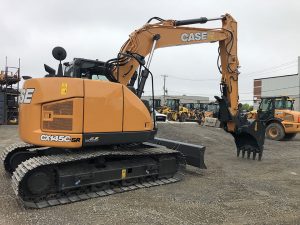
THE MINI EXCAVATOR
The main, and most obvious, difference between the various types of excavators and the mini excavator is the power and digging depth it can reach.
The compact size of a mini excavator makes it a much more maneuverable vehicle, increasing its productivity and responsiveness in a confined workspace. Equipped with tracks, the mini excavator is not designed for long distances. If you’re wondering how to use a mini excavator, there are four essential steps: open and close the bucket, use the arm, bring in and extend the dipper, and rotate the turret.
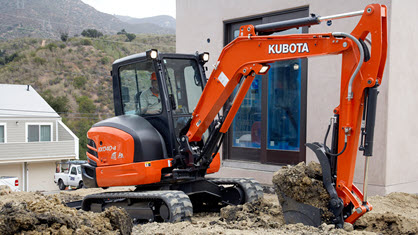
THE TRACKED EXCAVATOR
There are many types of excavators and buckets, but the tracked excavator is the most common and is the standard for excavators.
As its name indicates, this model does not have wheels. Instead, it is equipped with a pair of tracks, which gives it greater traction power.
This characteristic defines its main advantages as well as its only drawback. The tracks provide greater stability. Therefore, it’s the best choice if you need to work on elevated, steep, or muddy terrains. They are arguably the most versatile equipment of their kind.
However, the excavator’s travel speed may be somewhat slower than its wheeled counterpart.
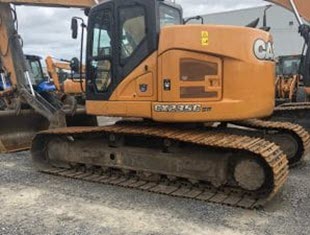
THE WHEELED EXCAVATOR
This vehicle essentially serves the same functions as the tracked excavator, but its movement on wheels marks a significant difference in its capabilities. Generally, the wheeled excavator performs best on concrete or asphalt, where higher speeds can be achieved.
Wheels are less practical on uneven or sloped terrains. However, in addition to faster performance, you gain greater maneuverability with the vehicle, making it ideal for jobs requiring a high level of precision.

THE CABLE EXCAVATOR
Also known as a dragline, this is a larger model compared to other types of excavators. However, size is not its only difference, as it has a unique operating mechanism. This excavator uses a hoist cable and a dragline to raise and lower the bucket.
The specific operation of this vehicle makes it ideal for deep digging, up to 65 meters in standard models. However, its large size and somewhat rigid system make this vehicle only useful for specific jobs.
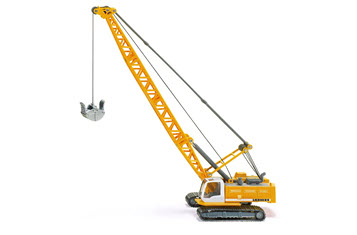
THE LONG-REACH EXCAVATOR
As the name suggests, long-reach excavators have a longer boom and arm. These can range from 12 to 30 meters, allowing you to reach distant areas.
Long-reach excavators are specially designed for tasks where the terrain or construction site prevents teams from getting close.
Demolition projects and work above rivers or lakes are perfect examples of where long-reach excavators are useful for hard-to-reach areas.
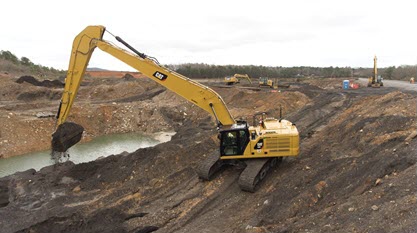
EXCAVATOR BUCKETS TYPES
Excavator buckets are attachments that enhance the capabilities of excavators. An excavator bucket is, by definition, a removable attachment designed to be used with an excavator for excavation work purposes. There are many different types of excavator buckets, each with its specific function: digging, gathering, or even moving materials.
THE TRAPEZOIDAL BUCKET TYPE
Also called the V-shaped bucket, the trapezoidal bucket is an ideal attachment for excavation projects requiring precision. Thanks to its wide bottom, it also ensures better performance when rehabilitating ditches, depending on the site.
THE 4-IN-1 BUCKET TYPE
As its name suggests, the 4-in-1 bucket is a versatile attachment. It combines six functions: stripping and pushing, loading, leveling, backfilling, and grabbing.
Perfect for cleaning up after building demolition, the versatility of this bucket allows you to save time on an earthmoving project.
THE TRENCHING BUCKET TYPE
Trenching buckets, also known as banana buckets, are designed to dig, as their name suggests, trenches or to dig in narrow spaces, such as electrical line installations.
THE DITCH CLEANING BUCKET TYPE
The ditch cleaning bucket is useful for stripping, gathering, loading, and shaping materials on your site. Without teeth and designed to be quite wide, the ditch cleaning bucket mainly serves earthmoving or backfilling needs.
EXCAVATION CHANTHIER SUPPORTS ALL YOUR EXCAVATION NEEDS
In conclusion, there are many types of excavators and excavator buckets suited to your excavation and demolition projects.
Depending on the project, renting an excavator can be a good idea, especially if you don’t need to use it daily. The benefits are numerous, provided you receive advice from professionals. The experts at Location Chanthier are available to answer your questions and guide you toward the excavator rental best suited for your project.
For your excavation and demolition work, trust the expertise of the professionals at Chanthier Excavation. Contact us today to discuss your project.


